Elm and steambent locust form a graceful music stand.
The three elm legs were cold molded on the same form. The rear leg is mortised into the top bar of the flowing music, and is removable for travel. Three laminations of locust were steambent into the form of the treble clef, and inlaid into the music rack. Photos of the process can be viewed in the Steambending Process category.

Detail of the bent wood Treble Clef.
Bending the Treble Clef

Steamed wood being bent around a mold to form a treble clef
Plywood is first cut into a shape that the wood will ultimately assume. After the wood is soaked in water and cooked in steam, it is clamped into one end of the mold and bent by hand around the shape. The strips of wood are forced into the mold by pressure from the custom made threaded fasteners.
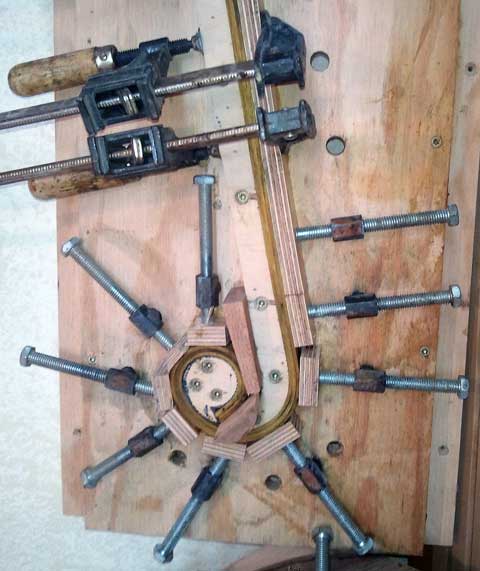
The 2nd half of the treble clef being steambent.
Where the curve becomes a straight line, clamps are used instead of the threaded fasteners. At this stage of the process, the laminations cannot be glued together, because they contain too much moisture. After cooling down, they will be separated and air dried before being laminated together on the same mold.
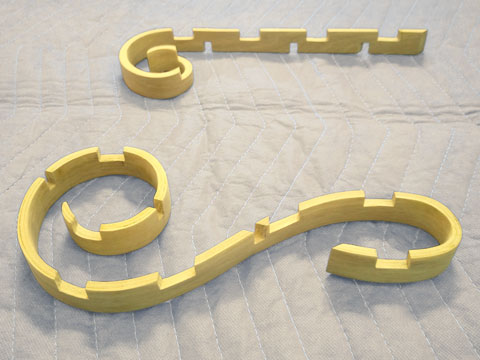
Laminated parts ready for assembly.
After being laminated and sanded, joints are cut into the pieces allowing them to attach to each other and to the music stand.
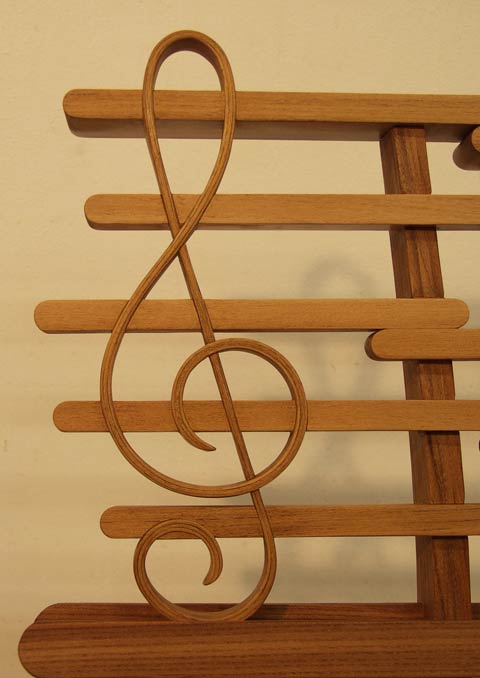
A view of the final assembly.
The bars of the music stand have been mortised to accept the assembled treble clef. More photos of the music stand can be seen in the Furniture category.
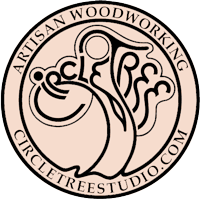



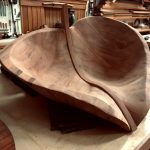

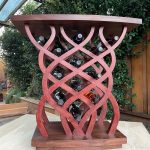

Comments by master-jae